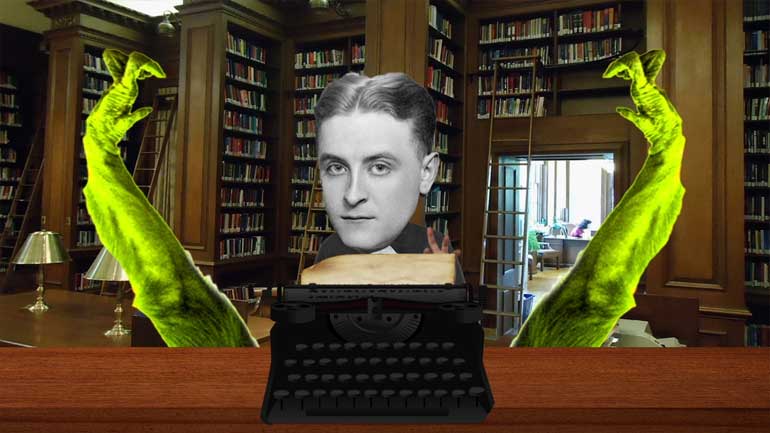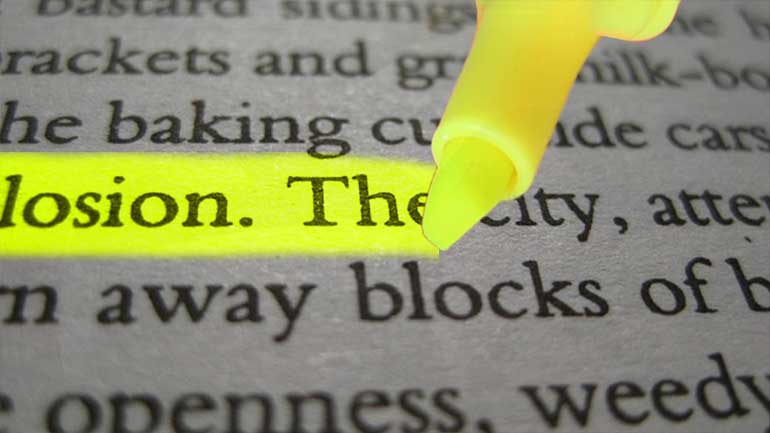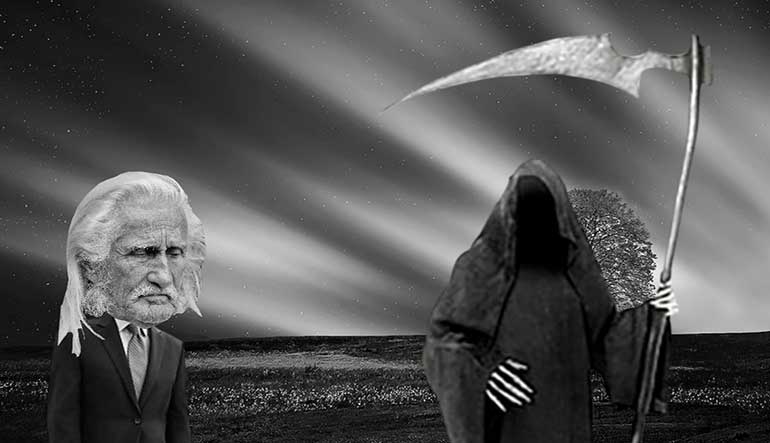ShmoopTube
Where Monty Python meets your 10th grade teacher.
Search Thousands of Shmoop Videos
Playlist Short Stories: Shmoopversations 6 videos
This video defines symbolism and analyzes the use of symbolism in stories like The Great Gatsby and To Kill a Mockingbird. What effect do symbols h...
The micro setting: Enterprise. The macro setting: “Space, the Final Frontier!”
This video defines theme and investigates how it’s used in literature—is it intentional? In this video, we discuss the difference between theme...
Power in Literature Short Stories: Part 1 1197 Views
Share It!
Description:
This video defines symbolism and analyzes the use of symbolism in stories like The Great Gatsby and To Kill a Mockingbird. What effect do symbols have, why do authors choose to use them, and how do we recognize them in literature?
Transcript
- 00:00
We speak student!
- 00:03
Power in Literature:
- 00:05
Symbols
- 00:07
à la Shmoop.
- 00:10
Alright and we’re rollin
Full Transcript
- 00:12
Hi from Shmoop global headquarters here in Mountain View, California
- 00:15
This video is about helping you understand literature
- 00:19
from a unique perspective.
- 00:21
You have to understand some basic concepts:
- 00:24
symbols, setting, and themes, among other things.
- 00:29
And we’re here talking with Deb Tennen who’s our chief guru
- 00:32
and literary analysis and all things creative here at Shmoop.
- 00:36
So Deb, why don't we start with the key concept here,
- 00:42
what is a symbol?
- 00:45
Okay, in the most basic sense, a symbol is
- 00:48
a tangible or concrete object
- 00:52
that represents an abstract idea. That’s it.
- 00:56
The symbol can be an actual object, like say
- 00:59
you wear your grandmother’s necklace
- 01:01
that she gave you when she passed away, you wear the necklace,
- 01:04
the necklace is a necklace but it symbolizes
- 01:06
your love for your grandmother.
- 01:08
It can also be a person, a person can be a symbol
- 01:12
of hope if someone has had a really hard life and they've struggled through a lot
- 01:18
you look up to that person that person has been a symbol for hope
- 01:21
and perseverance in your life so those are symbols in our everyday lives
- 01:25
they're really all around us.
- 01:26
Why do authors use symbols?
- 01:28
Because symbols are all around us everyday in our lives
- 01:32
a lot of them will happen accidentally. A writer will just write something
- 01:36
that they think of as a normal occurrence in their everyday life and then
- 01:41
a reader will read into it as a symbol because for that specific reader
- 01:44
it means something, you know,
- 01:45
more powerful than the author intended it
- 01:49
but authors will also intentionally use symbols
- 01:52
that's so that they can be a little more subtle
- 01:55
In the example of the Great Gatsby, which
- 01:57
has one of the most famous symbols in all of literature, that green light
- 02:01
you have Gatsby standing at the edge of a dock, looking out, and he has his hands outstretched
- 02:07
Nick just says, Gatsby had his hands outstretched,
- 02:10
toward the green light, across the water.
- 02:13
Green typically is the color of money,
- 02:16
and so it's very easy to almost purposely have
- 02:19
quote misled us a little bit so that we would go with
- 02:22
the materialistic interpretation
- 02:24
Yeah, and it’s actually interesting just to rewind a little bit
- 02:28
when Great Gatsby came out
- 02:29
it was actually just around the time that stoplights
- 02:32
became a thing so the green light is actually really complicated one
- 02:37
because it does represent both the future and the past
- 02:40
we have Gatsby, you know, looking across and
- 02:44
basically being stuck in the past this dream of Daisy that he'll never get
- 02:47
but it's also about you know moving toward
- 02:50
the future, it could go either way.
- 02:53
And it's up to the reader to decide which it means
- 02:55
or maybe it means both.
- 02:56
Give us one other symbol
- 02:58
and then let's move on to the actual
- 03:01
implementation of them.
- 03:03
Another symbol in a book that a lot of you might have read is the mockingbird in
- 03:07
To Kill a Mockingbird, the titular character
- 03:10
we never actually really see a specific mockingbird in the book
- 03:15
but it comes up again and again in small places and
- 03:19
we think of it most we think of it most when Atticus basically tells his kids
- 03:22
"Don't kill the mockingbird," it's basically that
- 03:25
mockingbirds are these innocent birds they’re not doing anything wrong,
- 03:30
so we wouldn't kill one.
- 03:32
The same kinda goes then we extend it to Boo Radley, like don’t bug him,
- 03:37
he’s just an innocent guy and we’re supposed to slowly realize that
- 03:41
throughout the book that he too is a Mockingbird
- 03:43
and then of course Tom Robinson is another mockingbird
- 03:46
this innocent guy who, he’s handicapped
- 03:51
we think of him as kind of this innocent guy who can’t really
- 03:54
defend himself and so he's another Mockingbird
- 03:58
and he actually does get shot.
- 04:02
Where is there an overuse of symbols?
- 04:04
One poor use of symbolism can be when a writer
- 04:07
forgets that a symbol is also the object that it is.
- 04:12
For example, we have an apple
- 04:15
as a symbol of original sin, whatever else you wanna associate with that
- 04:20
we think of all the fairy tales where the apple is poison,
- 04:23
we think of Adam and Eve, etc.
- 04:25
But the apple is also an apple. It’s not just a symbol of something
- 04:30
So writers, bad writers,
- 04:33
or writers who haven’t learned this will kind of pull symbols and be like
- 04:36
“Oh, I can have this object represent this abstract idea” but then they forget that
- 04:40
the object is also the object and it needs to serve a purpose in the story.
- 04:43
If it doesn’t make sense in context to have that specific object,
- 04:48
then the symbol kind of just becomes a little icky.
- 04:53
How do people recognize symbols?
- 04:55
The idea is that readers pull out the symbolism themselves, so
- 04:59
one reader might the apple as just an apple but another who has
- 05:03
experience reading a lot of biblical literature
- 05:07
or you know grew up on fairy tales they're gonna read different things into it
- 05:12
different cultures will also read different symbols in new ways
- 05:17
so, you know a writer is writing
- 05:19
to a very specific group of people, but then if someone
- 05:21
from a different culture comes along and reads it,
- 05:23
then they might pull something completely different from it.
- 05:26
Got it, understood.
- 05:29
What is a symbol?
- 05:31
Why do authors use symbols?
- 05:33
Where is there an overuse of symbols?
- 05:36
How do people recognize symbols?
Related Videos
They say that honesty is the best policy, but Jack lies about his identity and still gets the girl. Does that mean we should all lie to get what we...
Ever wish you could remember everything that you ever studied? How about everything that everyone has ever studied? Yeah, pretty sure our brains ju...
Ralph Ellison's Invisible Man is an American classic. Hope you're not expecting any exciting shower scenes though. It's not that kind of book.
Do not go gentle into that good night. In fact, if it's past your curfew, don't go at all into that good night. You just stay in your good bed and...










